The Digital Marketing is a discipline born with the rise of the Internet. That means it's just over 20 years old: it's a milestone of sorts!
So, in line with its own issues, how do we know how much to devote to it, in terms of budget lines?

Evaluating the budget allocated to digital marketing depends on several factors
According to Forrester Research, companies are allocating 45% of their marketing budgets to digital.
What are the top spending items in Digital Marketing? (Source: Hubspot)
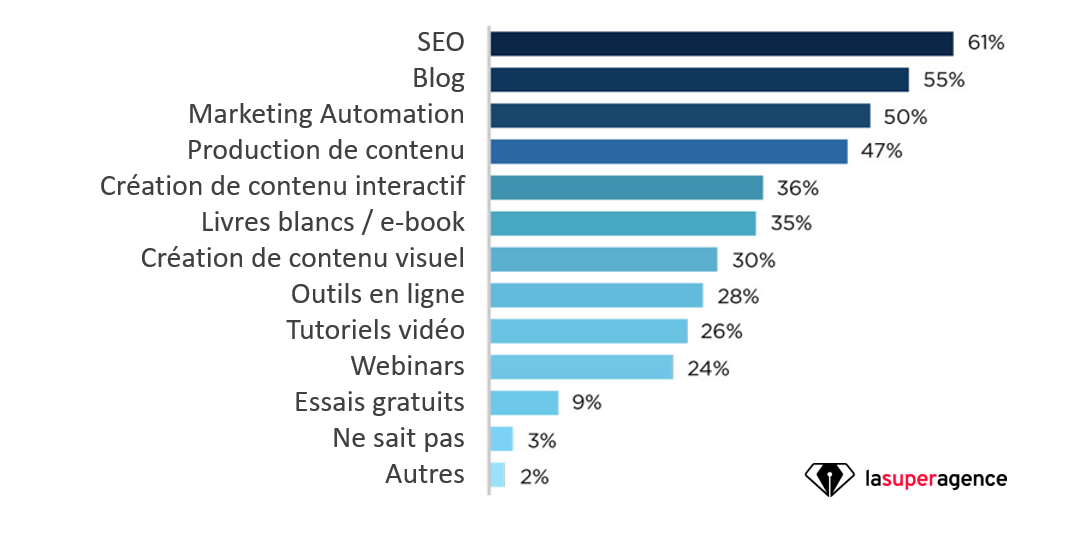
When you add in, the wages and costs of freelancers working for you, the expenses can quickly add up to significant sums.
Remember that:
- On average, the budget dedicated to Marketing represents 10% of company resources. In B2B (sales to businesses), it is around 5%.
- Digital Marketing budgets represent on average 45-50% of the overall budget and are constantly increasing.
- Content is increasingly profitable. The share of Content Marketing in overall strategy is expected to double by 2022 to 15%.
- Social media advertising accounts for about 25% of the digital marketing budget.
Now that you have a good idea of the basic numbers, digital strategy tools and some statistics, it's time to look at building a Digital Marketing budget.
Estimate your company's future revenue.
The estimated gross revenue is the amount of revenue you project to receive for a given period.
To find out this last number, you may need to ask your accountant or sales team for help in determining it, but it's the essential element for calculating your Digital Marketing budget.
It's essential to consider the Digital Marketing budget as an investment that is going to help you generate revenue over time.
Determine the ideal Marketing budget range
If your business is relatively new, such as a startup or less than five years old, consider allocating 12-20% of your gross revenue to Marketing.
As a new, unknown player in the game, you will need to make a name for yourself and your products/services. Marketing should be a priority for companies just starting out.
If your brand is more established, older than five years, you should allocate between 6% and 12% of your revenue to Marketing.
Let's take an example: the Gamma company was launched ten years ago. Over the past two years, their average gross revenue has been 1,000,000 euros per quarter, or 4,000,000 euros per year.
.This means that Gamma's ideal Marketing budget should be around €60,000 to €120,000 per quarter (or €240,000 to €480,000 per year). If half of that is allocated to Digital Marketing, that's between €120,000 and €240,000 per year.
You've seen how this works. Now let's see how to spend this money wisely in order to have a good return on investment.
How to allocate your marketing budget
Do you know that the marketing landscape is more complex than ever? So where should you allocate your budget between online and offline channels? And how should you allocate those funds to each of the different channels?
They're all about the right balance.
It always helps to start at the beginning. Start by examining what's working and what's not in your Marketing.
How are you measuring your Marketing efforts right now? Are you tracking where leads are coming from? Are you able to map out the conversion paths (or steps) that turn those leads into customers?
These basic insights are essential to establishing measurable Marketing. But there are a few more critical steps that will help you understand what turns a stranger into your customer:
- Set your benchmarks. This way, you can understand what a positive ROI really means for your business compared to your direct competitors.
- Understand the quality of your lead types. Every lead has an effect on your revenue. Not all leads are created equally. Understanding this can help you focus where it is most effective.
- Discover the data your sales team uses. How does the sales team convert prospects into customers?
- Determine your ideal customer profiles or buyer personas. Identify the types of prospects that will generate the most revenue and align with your company's ideal direction.
- Understand how long it takes for a prospect to become your customer. This number can vary greatly from business to business and helps you see the importance of each conversion.
- Track the buyer's journey of your current customers. Understand how they went from a problem to being your customer and everything that shaped that journey.
You can find out who is actually making a purchase and when prospects seem to be considering a solution to their problems. Plus, you'll know where you need to be to reach them with your Marketing.
You need multiple touch points to connect with a lead.
On average, a customer uses six touchpoints during a purchase. These touchpoints can be online or offline, so it's best not to abandon offline Marketing just yet (especially in B2C).
To become familiar with the mindset of your potential customers, your prospects, make sure you've walked through and mapped out the buyer's journey to clearly define where your ideal touch points are, both online and offline.
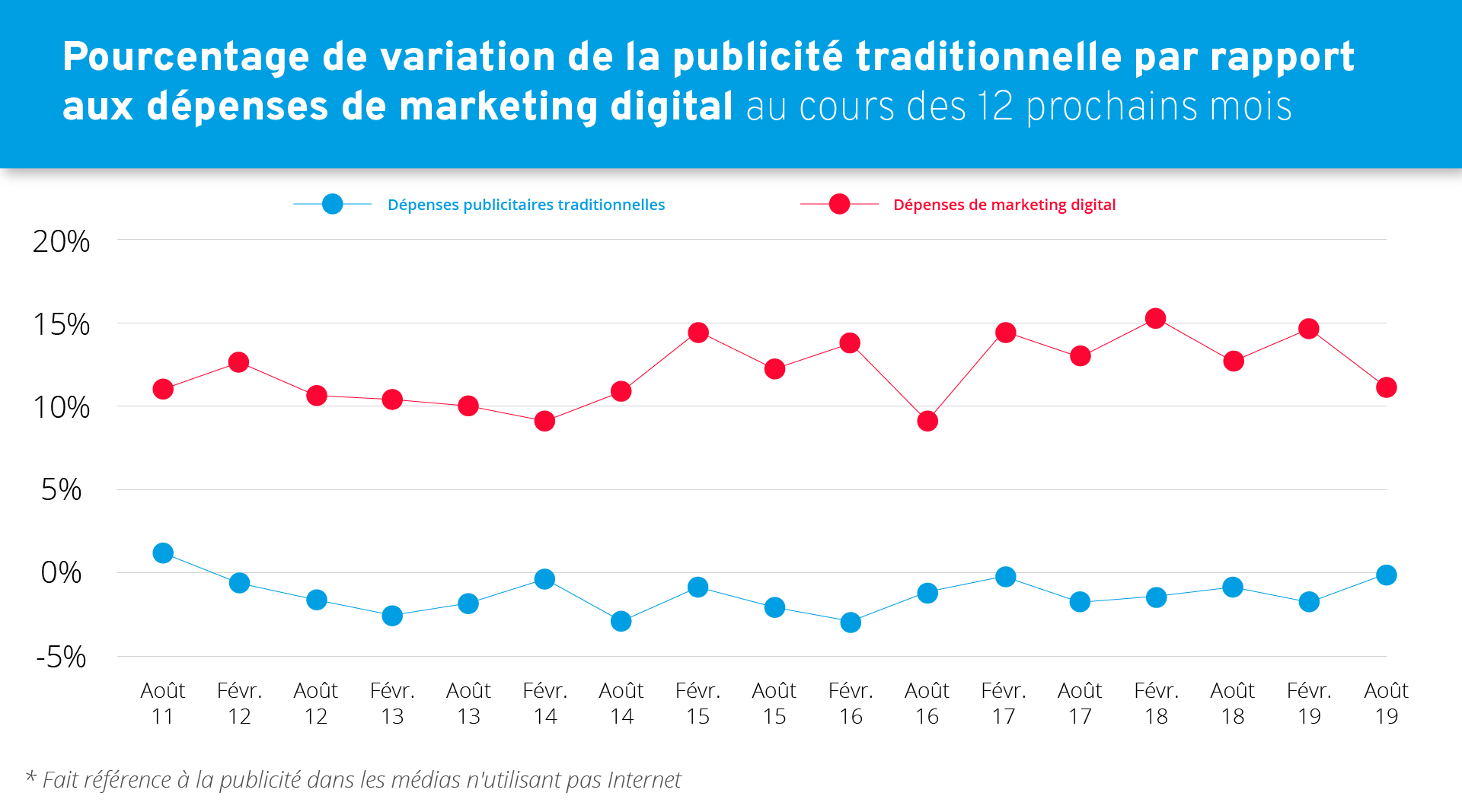 Digital Marketing Spending is Growing Every Year
Digital Marketing Spending is Growing Every Year
This chart shows the sharp contrast between digital growth and offline decline.
Over the past five years, investment in traditional advertising has been in gradual decline.
In comparison, Digital Marketing spending has consistently increased by at least 10% every six months. This means that companies are changing their Marketing spend.
What used to be spent on radio, TV and newspapers is now being spent on search, email and social media.
This trend is expected to continue over the next few years.
One indicator that does not concern France, but is indicative of a transition: in 2017, digital spending surpassed TV ad spending in the United States for the first time in history.
And the gap is only growing: by 2020, digital spending has surpassed television by 36%.
Brands that rely more on the Internet to generate sales as an e-commerce business invest a greater percentage of their Marketing budget toward digital.
While the latest Forrester Research report predicts that digital Marketing spending will account for 45% of all ad spending in 2020, this figure will vary depending on a variety of factors, including industry, growth plans and local market.
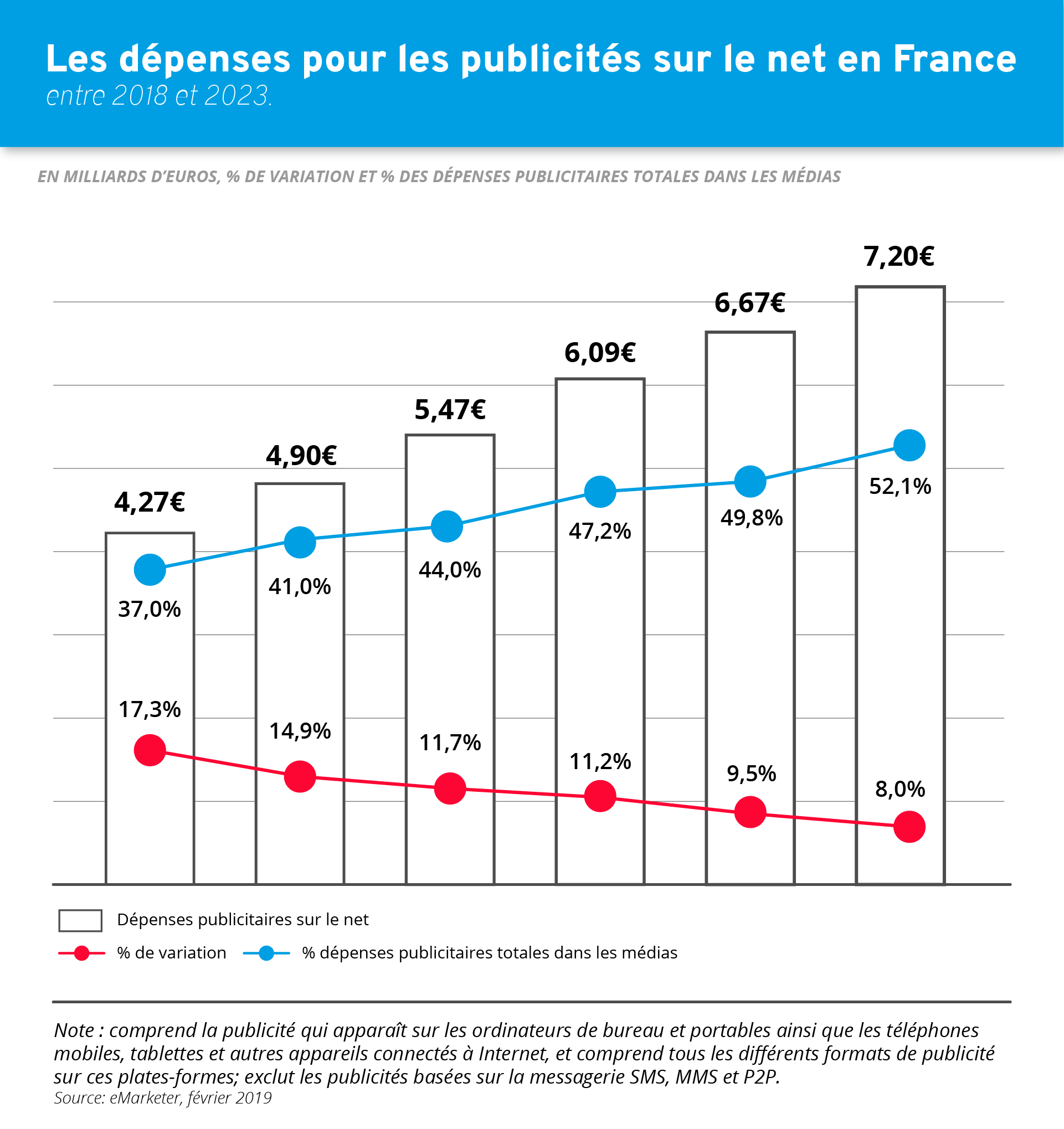 Spending on online ads in France
Spending on online ads in France
For more traditional businesses, which rely on offline AND online activities to fill the sales funnel, a healthy mix of Marketing investments is in order.
In all industries, digital Marketing budgets have been steadily increasing, while traditional channels have been losing ground.
What Marketing strategies and tactics yield the best results?
In a survey of 2,500 digital marketers, participants indicated which Marketing activities generated the best return on investment.
Although this particular survey dates back to 2017, similar trends can still be found today.
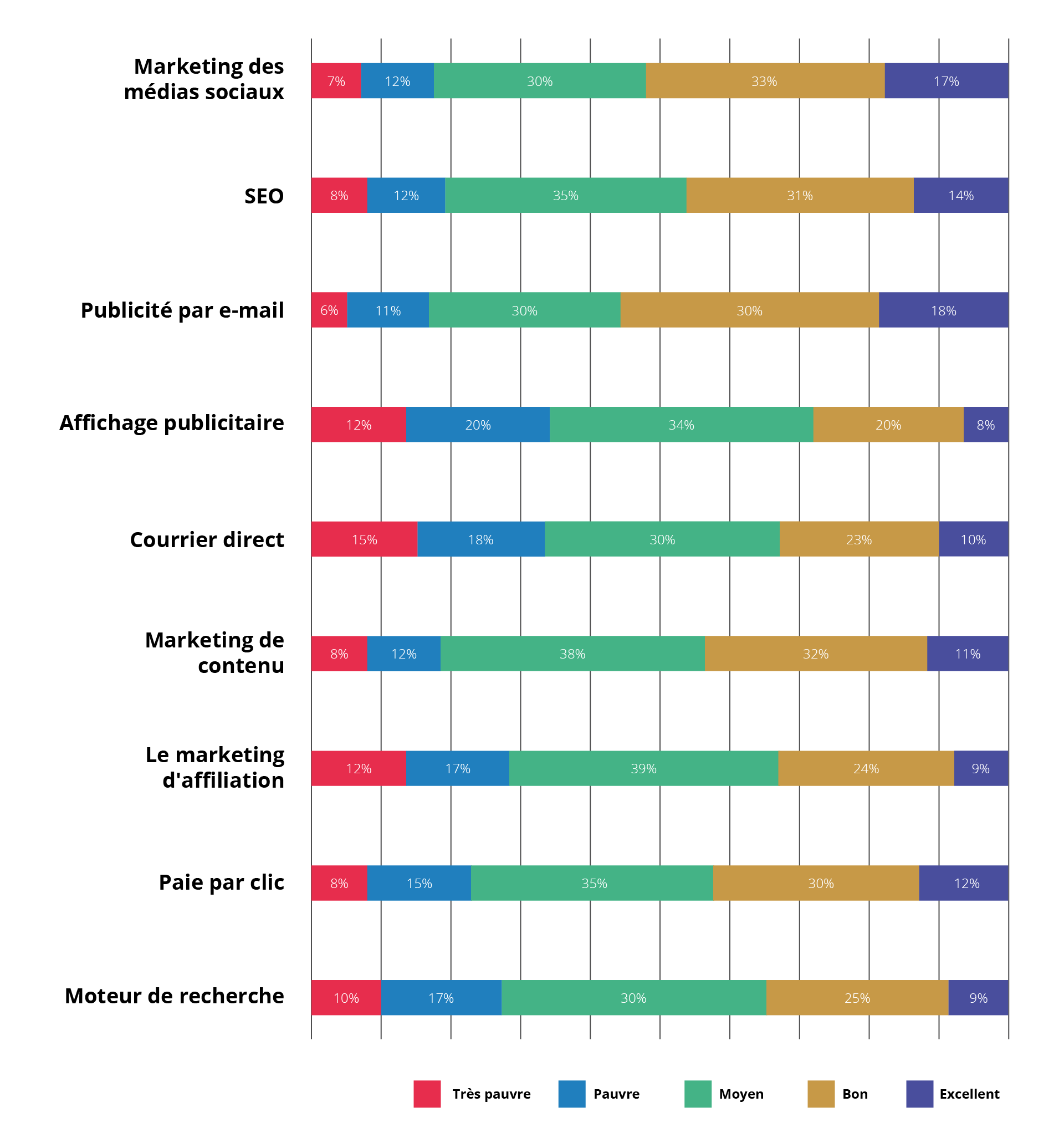
Which activities have the best ROI?
As you can see, Email Marketing is still in the lead with the highest percentage of Excellent and Good ROI results, followed closely by social.
Marketing automation and other digital technologies are proving effective: Email Marketing, SEO, Social Network Marketing and Content Marketing.
All of these techniques are grouped within the Inbound Marketing methodology.
Changes are expected in social media investments
Social media marketing is a specific channel that many companies are working in. In Hanapin Marketing's 2019 Paid Social report, 97% of specialists are investing in paid social advertising, up 10% year over year.
Facebook is the most targeted social network for most marketers, with 91% currently investing in Facebook. Interestingly, 26% plan to spend less on Facebook in the coming year.
Instagram (owned by Facebook), meanwhile, expects an increase in investment from nearly half of respondents.
51% of marketers expected to spend more on YouTube, which has become more focused on direct response.
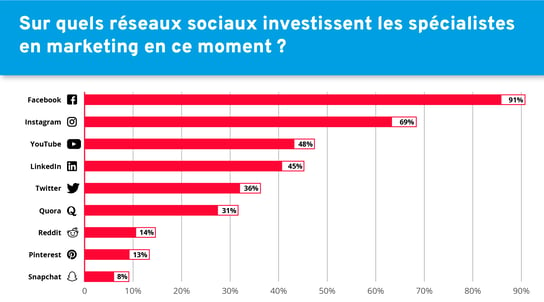
On which networks do the experts invest?
HubSpot takes a deeper dive into the advertising part of your Digital Marketing in this article: how much should you really spend on digital advertising?
At the end of the day, how much you'll spend on Digital Marketing depends on many factors: your revenue, the channels that work for your buyers and what they cost, your overall goals and expectations for growth, etc.








